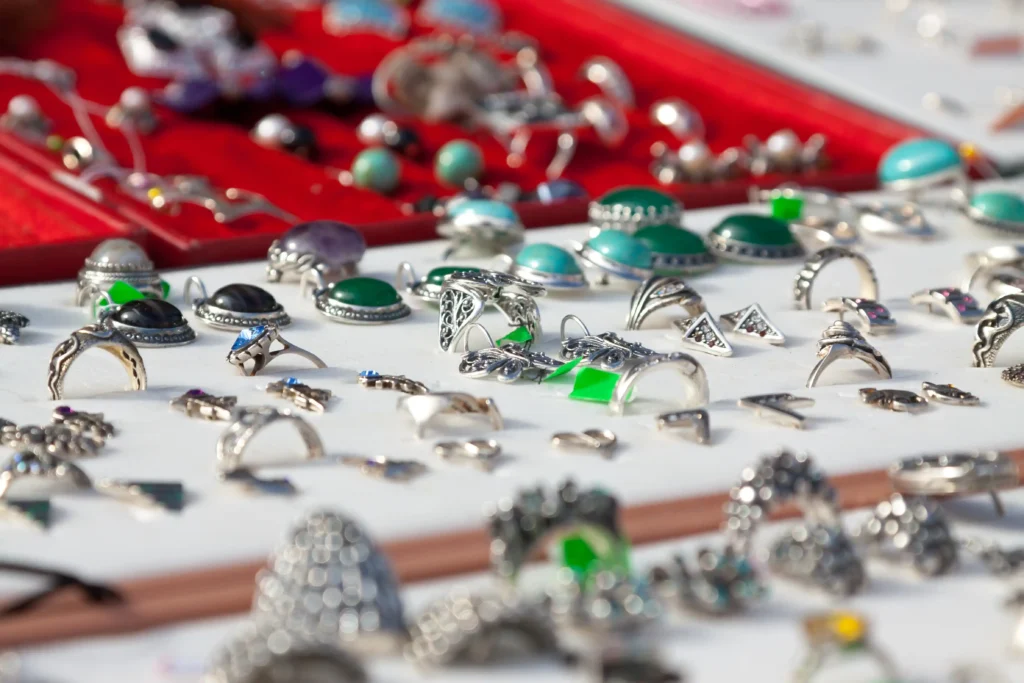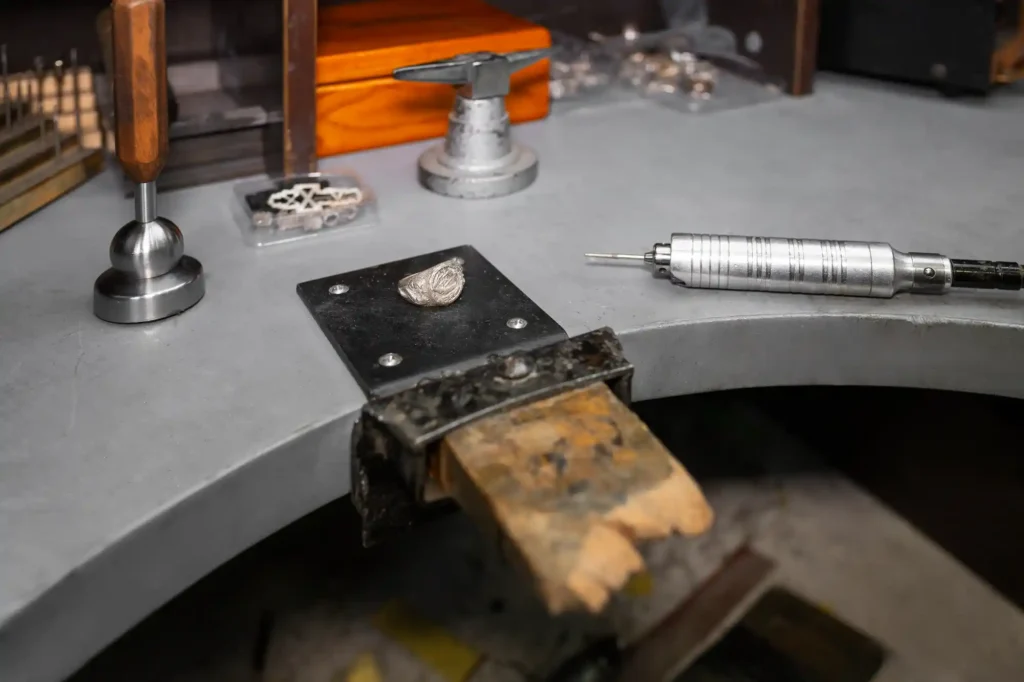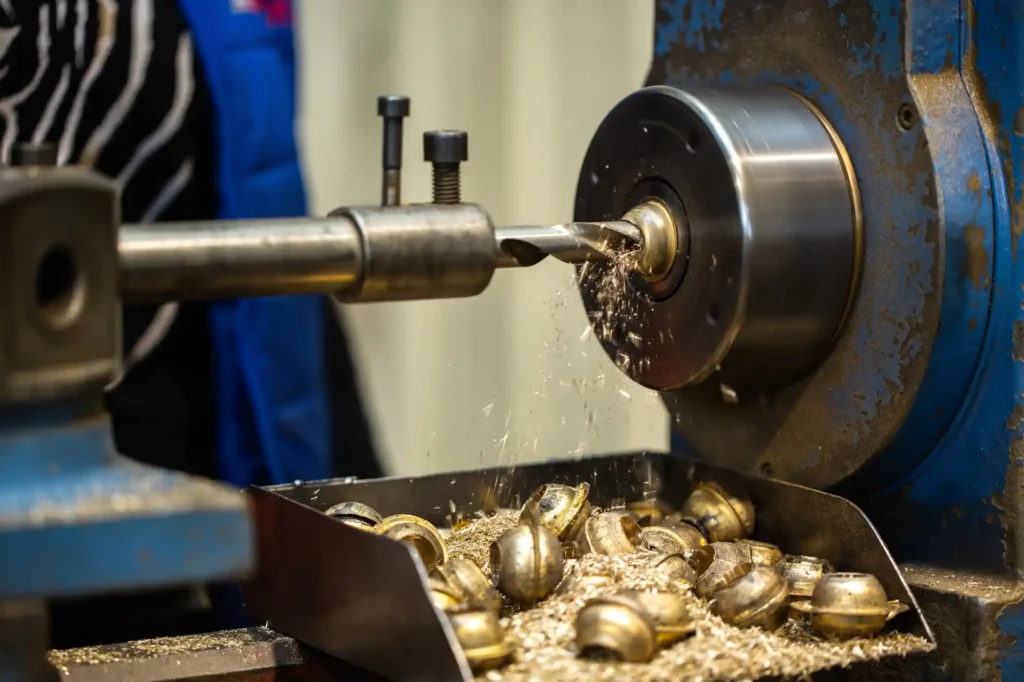Ethical practices in jewelry manufacturing are to produce jewelry in a way that respects humans, preserves the environment, and also allows guidelines of fair labor standards. This process of crafting jewelry involves responsible sourcing of materials, ensuring safe workplaces, and reducing environmental impacts by following eco-friendly practices.
For example, diamonds and gemstones come from sources that are often linked with unethical mining practices, making environmental degradation and exploitation of workers the two prime evil byproducts of this. Ethical practices in jewelry manufacturing address such issues by sourcing certified suppliers who collaborate on fair trade with labor standards.
Maker’s Row connects jewelry manufacturers with suppliers who prioritize ethical practices. From sourcing eco-friendly materials to collaborating with certified artisans, the platform simplifies the search for sustainable solutions. By offering resources, guidance, and a network of reliable partners, Maker’s Row empowers businesses to adopt ethical practices in jewelry manufacturing seamlessly.
 Credits: Freepik
Credits: Freepik
Significance of Ethical Practices in Jewelry Manufacturing
There are various reasons as to why ethical practices in jewelry manufacturing are important:
Consumer Trust and Loyalty: Modern consumers are highly value-oriented; they consider the ethical fabric of a brand before they purchase a product; hence, commitment to transparency and sustainable jewelry production builds and maintains consumer trust and loyalty.
Environmental Impact: Most mining practices for jewelry contribute a lot to the destruction of ecosystems, but sustainable jewelry production practices such as recycling metals or lab-grown stones reduce the environmental impact.
Fair Treatment of Workers: Historically, the jewelry industry has been a place of incidences where worker exploitation was a high concern. Ethical practices in jewelry manufacturing guarantee fair wages, safe conditions, and generally ensure workers’ rights.
Compliance with Regulations: Increasing global regulations inevitably demand sustainable jewelry production for businesses to survive, so establishing ethical practices in jewelry manufacturing levels the ground for compliance and reduces legal issues.
Key Components of Ethical Practices in Jewelry Manufacturing
Adopting ethical practices in jewelry manufacturing requires an in-depth responsible approach. Here are the key components:
1. Responsible Sourcing of Materials
It begins with raw materials being sourced responsibly in ethical jewelry production, which leads to ensuring that gold, silver, diamonds, or gemstones are obtained without doing harm to the environment or workers. Fairtrade Gold and the Kimberley Process provide evidence of initiatives that support ethical sourcing.
2. Techniques for Sustainable Jewelry Production
These techniques are very important to minimize damage to the environment as well as workers. They comprise using:
- Recycle metals instead of newly mined ones.
- Opting for lab-grown diamonds, which have a significantly lower carbon footprint than mined diamonds.
- Employing energy-efficient methods in production facilities.
3. Fairness in Labor Practices
Fair wages, safe working environments, and no child labor are the key components of ethical practices in jewelry manufacturing. These are some of the principles a brand follows if it also works with suppliers and artisans who abide by the established international labor standards.
4. Transparency and Traceability
Consumers want to know where their jewelry comes from. Adopting a transparent supply chain would allow companies to trace all movements of their products—from raw materials through manufacturing up to finished products. Blockchain technology is increasingly used for traceability in the jewelry industry.
5. Community Engagement
Another pillar of ethical practices in jewelry manufacturing is to support local communities. The brands work with local artisans and offer fair pay as well as the possibility of growth without losing traditional manufacturing processes.
 Credits: Freepik
Credits: Freepik
Steps to Employ Ethical Practices in Jewelry Manufacturing
For businesses looking into integrating ethical practices in jewelry manufacturing, here is a guide on how to put such step-by-step approaches into action:
Step 1: Audit Your Supply Chain
The first step to be followed is an evaluation of the existing supply chain of the company. Identify areas where unethical practices could be found and/or evaluate to see the environmental impact of your sourcing and production methods.
Step 2: Collaborate with Certified Suppliers
Engage only those suppliers who are certified by institutions like the Responsible Jewellery Council (RJC) or the Alliance for Responsible Mining (ARM). Ensure that the materials you import are ethically sourced and have met environmental standards.
Step 3: Adopt Sustainable Jewelry Production Approaches
Adopt some of the greener processing technologies and materials in your production. For instance, one can invest in machines that reduce wastages or change power sources from fossil fuels to renewable energy in the factories.
Step 4: Brief Your Employees on Ethical Jewelry Production
Make sure that all employees and suppliers are aware of and understand the essence of ethical practices in jewelry manufacturing. Ensure that they undergo repeated training sessions to not only keep them updated with industry gains but also improve on the best practices.
Step 5: Encouraging Transparency
In your marketing and labeling, communicate your ethics to consumers clearly. For example, brands can put tags on their products so that they contain information on where they were sourced from and their environmental footprint.
Step 6: Engaging Third-Party Audits
Regular audits from a third party will have you aligned with ethical standards all the time. This will also increase trust with the consumers and stakeholders involved.
Challenges in Implementing Ethical Practices in Jewelry Manufacturing
While the benefits are significant, adopting ethical practices in jewelry manufacturing does come with challenges:
High Cost: The sourcing of certified materials and implementing sustainable methods into the business becomes very costly, as the requirements will require a substantial financial cost that smaller businesses may not be able to afford.
Complex Supply Chain: Tracing the original source and supplier of the materials becomes complicated as it involves dealing with various suppliers.
Consumer Awareness: The most important challenge is probably the lengthy sensitization process before one gets the consumers to understand why they should buy jewelry made through sustainable jewelry production.
Despite these challenges, the long-term advantages of ethical manufacturing outweigh the initial hurdles.
Leading Brands in Ethical Jewelry Production
Some of the benchmark-setting jewelry brands for ethical practices in jewelry manufacturing include the following:
1. Brilliant Earth
The world’s leading, most optimal, ethical jewelry maker, Brilliant Earth gives certified conflict-free diamonds and recycled precious metals and practices transparency by giving detailed information of the origin of the materials used.
2. Pippa Small
The brand works directly with artisans of marginalized communities from all around the globe, ensuring fair wages and maintaining their traditional crafts. The pieces of jewelry by Pippa Small showcase the beauty of ethical craftsmanship.
3. Chopard
Chopard pledges to go 100% ethical when sourcing gold in its products. The “Journey to Sustainable Luxury” initiative was launched to show commitment to ethical practices in jewelry manufacturing.
The Future of Ethical Practices in Jewelry Manufacturing
With the advent of lab-grown gemstones and blockchain technology for transparency, it is now easier than ever to incorporate sustainable and ethical practices in jewelry manufacturing. The impact of raising public awareness and global regulations will compel more companies to move in this direction.
 Credits: Freepik
Credits: Freepik
How Maker’s Row Encourages Sustainable Jewelry Production
Maker’s Row connects manufacturers to certified suppliers of eco-friendly materials and sustainable production methods. By this, the adoption of responsible practices has been made easy. It has a vast network that offers transparent supply chain options and has the necessary resources to ensure that all people within the industry meet the required standards. Whether you are looking for ethical gemstones, recycled metals, or tips on sustainable jewelry production, Maker’s Row will help you implement your ethical practices in jewelry manufacturing every step of the way. Build consumer trust, reduce environmental impact, and increase the credibility of your brand through Maker’s Row.
Conclusion
The adoption of ethicality has become an advanced dynamic in jewelry manufacturing, but it is not just about fulfilling ethical practices in jewelry manufacturing; it is also about doing good for society. The sustainable making of jewelry does much less damage to the environment as it encourages healthy and fair labor practices while making consumer trust an overall corporate goal. While there are challenges, more rewards come with ethical production than losses, thus creating a more accountable and sustainable future for the jewelry industry.
In the times of changing consumer preferences—more and more inclining towards sustainability—the question is no longer if brands should adopt ethical practices but how soon. Such changes must be adopted to ensure that the business goes beyond managing itself but is also a force for good.
Read more…